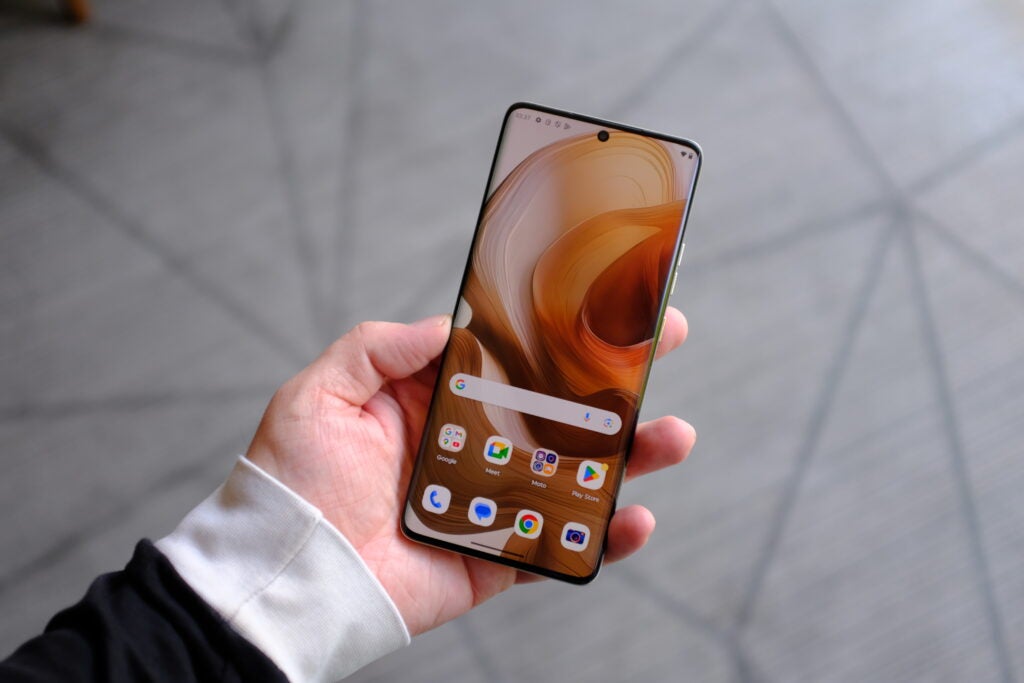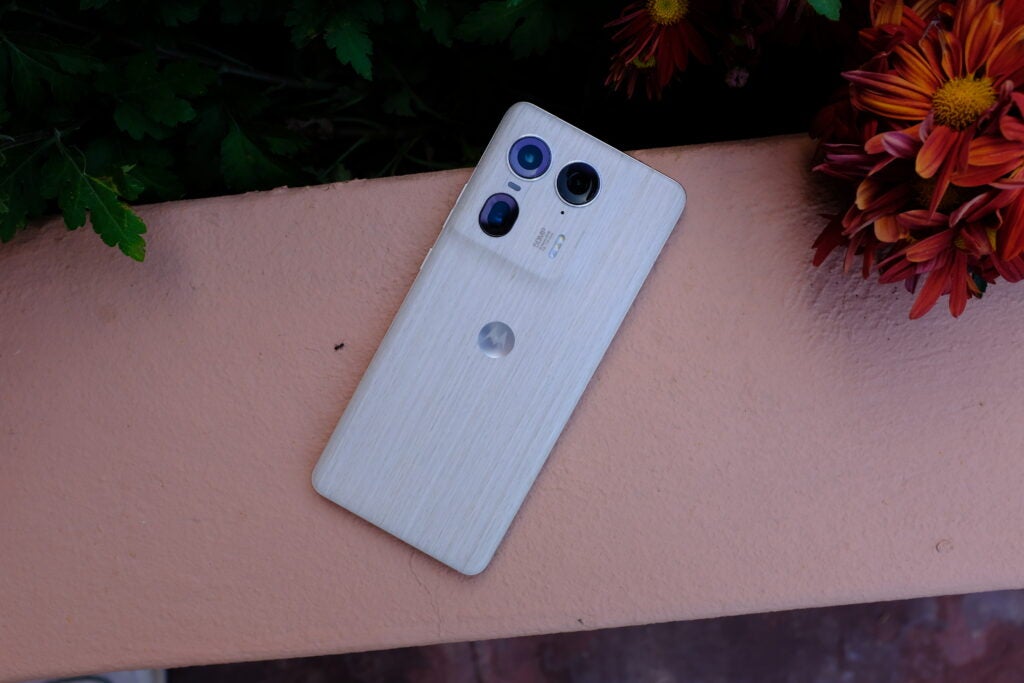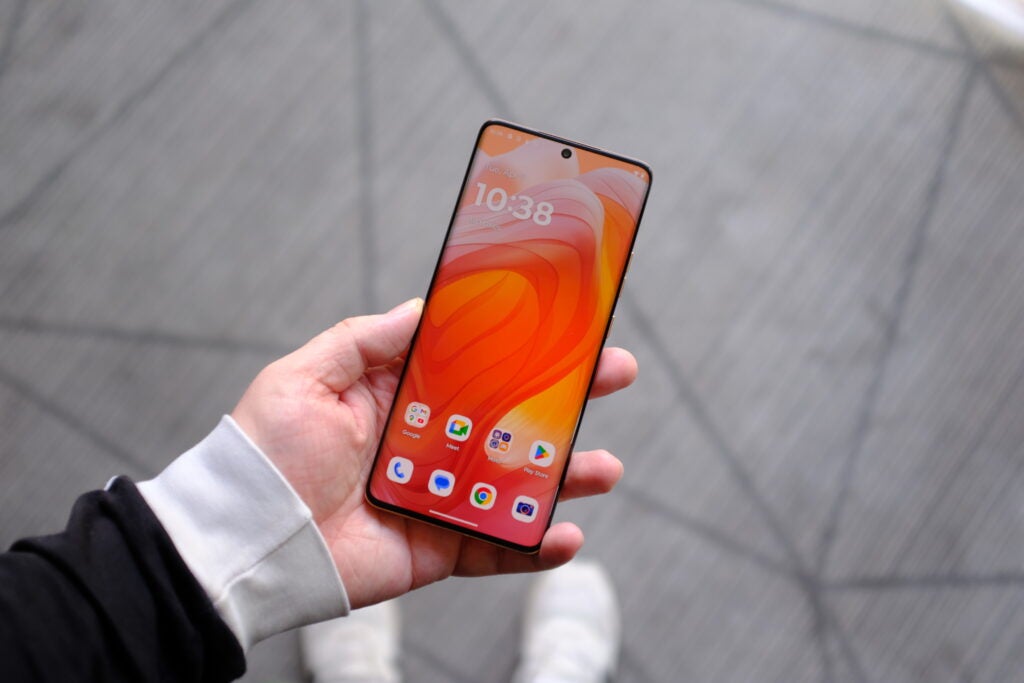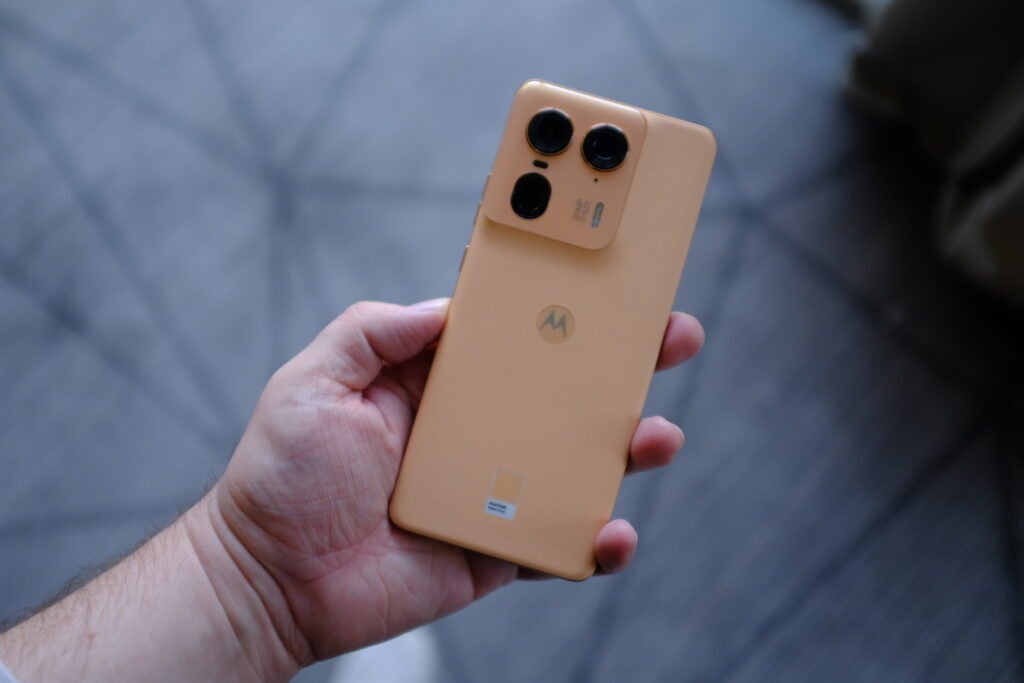First Impressions
The Motorola Edge 50 Ultra is a design treat that should be able to compete with other Android flagships when it comes to specs and features too.
-
Very fast charging125w Turbo Power is supported and you get a charger in the box -
Standout DesignVegan leather or pearl rear gives a distinct finish
Introduction
Motorola wants to stand out from a crowded market with the Edge 50 Ultra and it makes a very good first impression.
Starting at £849/€999 (no US pricing or release date have been released yet), the Motorola Edge 50 Ultra isn’t your typical flagship device. It ditches angular metal designs for something a lot more tasteful and even has a wooden finish option.
It’s powered by Qualcomm’s new 8s Gen 3 chip, has loads of storage and fast charging that leaves the Samsung Galaxy S24 comfortably behind. Has Motorola finally made a flagship phone that can compete with the very best? Here are my early thoughts.
Screen and Design
- Wood or vegan leather finishes
- 1200p display looks great
- One of the best looking phones around
I got to spend a few days with the Motorola Edge 50 Ultra ahead of its official unveiling and the device made an excellent first impression, mostly down to the standout design that sets it apart from the bland slabs that mostly make up the Android smartphone market.
In a nod to the iconic Moto X, the Edge 50 Ultra can be purchased with a wooden back – a finish rarely seen on phones these days. The light Nordic Wood finish is grippy and Moto reps said it would be just as durable as the other finishes.
If wood isn’t your thing, the Edge 50 Ultra also comes in a duo of vegan leather finishes that both look great. You can see the ‘Peach Fuzz’ colour in the images below, and Motorola has nabbed this colourway from Pantone where it’s the ‘Colour of the Year’ for 2024. It’s a light hue that is a little bit orange with a pinky finish. There’s also a darker green option too, which is a little more traditional.

While the wood is grippy, the vegan leather finish is really soft and comfortable to hold. With many phones, Samsung’s Galaxy S24 range for example, going for that industrial metal-focussed build, the Edge 50 Ultra is quite the opposite. Even the way the finish covers the camera bump shows how much thought has gone into the design.
On the front, there’s a 6.67-inch OLED display with curved edges that are starting to go slightly out of fashion. While I would have preferred a flat screen, this is a very good panel thanks to the 1200p resolution (Motorola is calling this Super HD), high levels of brightness and strong HDR support. There’s also support for refresh rates up to 144Hz.
Considering the high-end €999 price, many might be wondering why Motorola didn’t plump for a 1440p display. However, I don’t think you’re missing out on much with the 1200p panel chosen and if it helps stretch the battery life further, it makes sense.

Specs and Software
- Qualcomm’s 8s Gen 3 chipset
- 1TB storage and 16GB RAM
- Seriously fast 125w charging
Motorola has made several interesting choices when it comes to the internals of the Edge 50 Ultra. Instead of the true flagship 8 Gen 3 chipset from Qualcomm, there’s the slightly less feature-rich 8s Gen instead.
The differences between these chips are minimal – you can read about all the differences in our Qualcomm 8 Gen 3 vs 8s Gen 3 comparison – and are mostly focused around supported camera features rather than pure power.
Motorola has also prioritised charging, not only adding support for the seriously fast 125w TurboPower tech, but including a capable USB-C charging in the box. As this is a USB-C to USB-C PD capable plug, it can charge many laptops and other high-powered devices too. Wireless charging is supported up to 50w, too.
There’s an impressive 512GB or 1TB of internal storage – ideal for those who want to store lots of offline content – and 16GB of RAM too, more than you’d expect at this price.
AI is the buzzword of the year and Moto’s version of Android 14 does include several AI-labelled features. You can, for instance, create a wallpaper based on a photo of an outfit using generative AI and there’s the full array of Google Photos AI editing features, like Magic Eraser.

Camera
- Triple camera array on the rear
- 50MP selfie camera
- AI enhancements
Many Motorola phones have been let down by poor camera performance and it’s the main area I wasn’t really able to test during my time with the phone. I have to make it clear that the phone I was using was running pre-release software, so everything from image processing to speed will likely change.
As a result, I will mainly stick to specs here, with our full review on the camera coming when we’ve had the final product long enough to run it through all our usual tests.

On the back of the phone there are three cameras. First off there’s a 50MP main with f/1.6 aperture, OIS (optical image stabilisation) and phase detection autofocus (PDAF). Next up is a 50MP (122-degree FOV) ultrawide with a macro mode and finally there’s a 64MP telephoto with 3x zoom. Around the front, there’s a 50MP selfie with autofocus – a feature not found on too many phones.
There’s more to this camera than hardware though, as Motorola is focussing a lot on its AI-infused Photo Enhancement Engine. What exactly is AI about this mode remains to be seen, but Motorola says the engine tweaks multiple parts of a phone, from the exposure to the bokeh and shadows.
It’s a strong-sounding camera package, even if nothing particularly stands out from the crowded Android flagship market. A lot will depend on how quick the camera app is and how good the image processing is.
Early Verdict
There’s a lot to like about the Motorola Edge 50 Ultra, especially the soft design and various finishes. Looks aren’t everything though, and the phone needs to impress elsewhere to make it a better pick when the competition is so strong.
None of the AI features really stood out for me during my initial time with the phone, with most of them simply rebranded existing skills, but this could change over time. There are still questions to be answered about the camera too – a weak point of many previous Motorola devices.

























